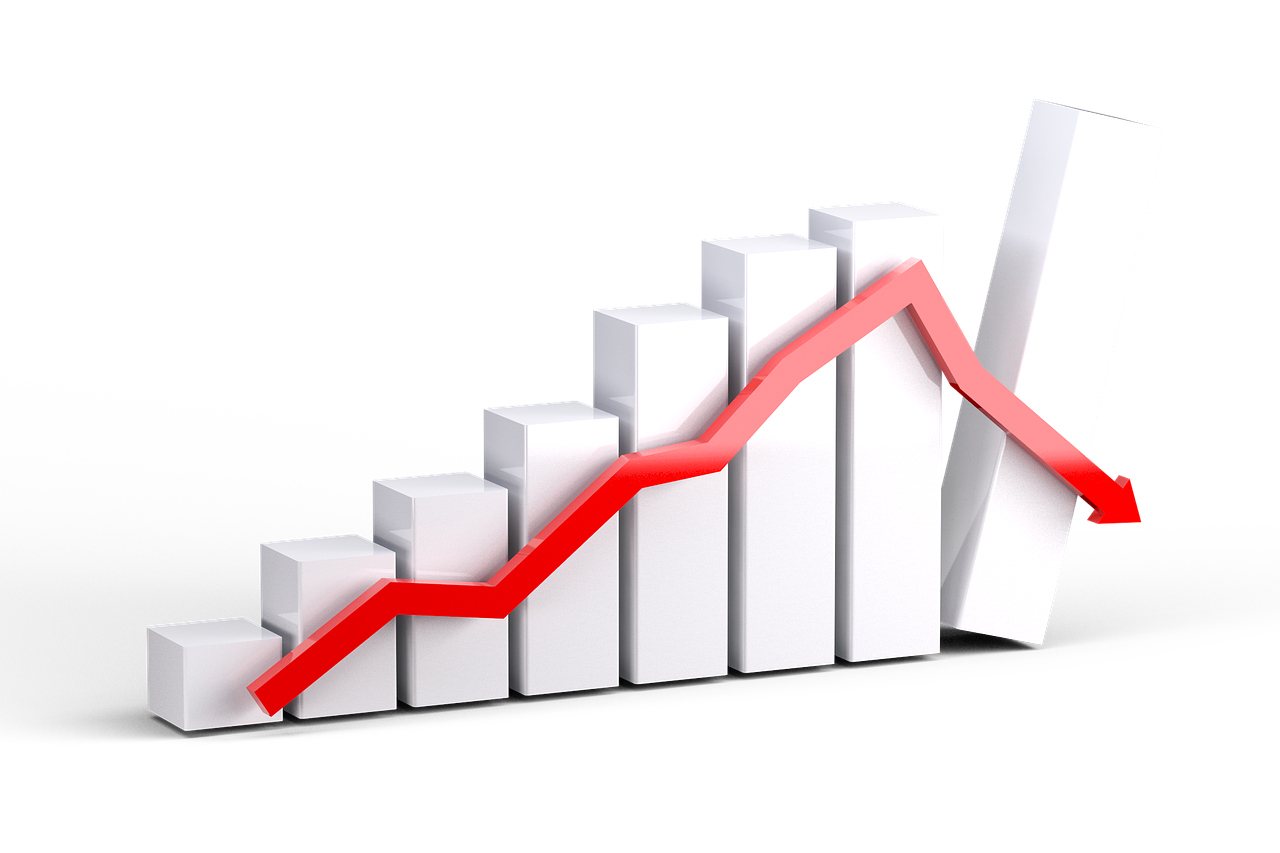Merrill Lynch køber ikke den fremherskende opfattelse, at USA står over for en forlænget og dyb recession. Virksomhederne har alt for god en indtjening til at sige, at vi står i en langvarig recession, selv om der har været en recession i år, mener banken i en omfattende analyse. De to tilbagegange i væksten i år gør det ikke rimeligt at erklære, at økonomien befinder sig i en alvorlig nedtur, mener banken. Men økonomien er ikke kommet på højkant endnu, og det viser sig også ved en nedjustering af flere prognoser for i år og næste år. Der kommer først en egentlig fremgang, når Fed begynder at stimulere økonomien igen.
Business Revenues Too Strong For A First-Half Official Recession
Despite two consecutive quarters of contraction in U.S. real gross domestic product (GDP)
this year, it’s too soon to declare the economy in recession. First, there’s a possibility that
data revisions could reverse the relatively small -0.9% annualized decline of the advance
Q2 GDP report. Second, evidence of a broad-based economic decline doesn’t appear
sufficient at this time.
Indeed, despite rapid moderation through July, the Institute for Supply Management (ISM)
manufacturing and services surveys have remained consistent with expanding activity this year.
Also, since its inception in 1959, the Conference Board (CB) Index of Coincident Indicators (ICI)
never increased throughout a recession. This index started to increase in April 2020, when the
pandemic recession was declared over, and has continued to do so throughout the first half of
2022, invalidating the recession signal from the two negative GDP quarters.
A closer look shows a decline in only one of the ICI’s four components (real manufacturing and
trade sales), which was not enough to offset growth in its other three components (payroll
employment, industrial production, and inflation-adjusted personal income less transfer
payments), keeping the composite on an uptrend. The composite doesn’t go back to 1947, the
year with the only other instance of two consecutive quarters of negative real GDP outside a
recession. Only two of its subcomponents (payroll employment and industrial production) go
back that far, but neither declined during those two negative quarters, instead remaining on
their three-year uptrends until a recession began in late 1948.
In our view, commonalities with the post-war experience are not surprising, since, as discussed
in past reports, the post-pandemic monetary policy has been most similar to that during, and
after, World War II. Basically, as money-supply growth sharply declined after the war, the
economy and inflation slowed as well, with two negative quarters of real GDP in 1947 without
an official recession designation—similar to the first half of this year—followed by an official
recession from November 1948 to October 1949. As a result, inflation eventually went down
from about 10% in 1947 to slightly negative in 1949.
While inflation is also likely to come down significantly over the next two years as a lagged
result of the deceleration in money-supply growth from +27% year-over-year (YoY) at the
beginning of 2021 to about 6% in June, still-rising inflation through June sustained corporate
revenue growth more than rapidly fading real economic growth would have suggested in a lowinflation environment such as that of the pre-pandemic period. In turn, strong revenue growth
has helped support profit margins, Equity prices, and corporate credit markets, as well as
employment, production and investment, since they are directly related to the health of
corporate cash flows, capital-market conditions, and expectations for business conditions.
Still, a slow-motion adjustment process in response to sharply lower money-supply growth,
higher interest rates, weakening real growth, and peaking inflation this year is likely to push the
economy closer to a recession, in our view, as reflected in the following current dynamics:
• While the robust job market has boosted labor income the most since the early 1980s,
inflation has quickly turned these large gains into purchasing-power losses. For
example, wages and salaries rose at an annualized rate of almost 8% year to date, but
inflation made it feel like a 3% cut. YoY, overall real disposable personal income
dropped the most in the first-half in the history of the Bureau of Economic Analysis
series going back to 1948, and four times more than its largest previous decline
during the 1974 recession. Not surprisingly, real consumer spending has decelerated
from an almost 7% annualized gain at the end of 2021 to a meager 1% in Q2.
• Part of the decline in consumer spending has been due to ongoing supply-chain issues
that have continued to constrain motor-vehicle supply in Q2. While resolving these
problems and rising motor vehicle production will help boost supply and thus improve
consumer spending on durable goods, we believe housing is likely to remain a drag on
GDP because of the drop in affordability, tightening lending standards, declining
housing construction, and negative indirect effects of weaker home sales on
consumer spending in general.
• Consumer expectations have declined substantially this year. While the University of
Michigan survey has stabilized with the moderation in gasoline prices, it remained at
recessionary levels in late July, a negative for the GDP outlook.
• Aside from the big rise in mortgage rates this year, the Fed’s survey of bank loan
officers reports a sharp tightening of business lending standards in Q3.
• The CB’s CEO confidence dropped substantially in Q2, and small businesses’
expectations for improving business conditions were the lowest in June since 1975,
according to the National Federation of Independent Business (NFIB) survey.
• The CB’s Index of Leading Indicators posted a fourth consecutive drop in June,
consistent with continued softening of economic conditions in the second half.
• The ISM manufacturing survey inched down again in July. The sharp decline in its new orders subcomponent deeper into contraction territory and the surge in its inventory
subcomponent do not bode well for industrial production in coming months. Moreover,
notwithstanding monthly volatility, our analysis suggests that both manufacturing and
services ISM surveys will likely remain on a downtrend, consistent with weakening GDP
growth.
• Overall, the balance of forces shaping the economic outlook seems unfavorable for
corporate revenues and profit margins. Importantly, inflation is likely to slow in the
second half as a result of already declining money-supply growth, suppressing growth
in nominal magnitudes such as nominal GDP, personal income and corporate revenues.
This is particularly negative for the profits outlook because of the sharp ongoing
increases in labor costs. The Bureau of Labor Statistics’ employment cost index (ECI)
surged from 2.9% YoY to 5.2% over the past two years, its fastest pace since 1984, and
much above consensus expectations. Based on our analysis, this comprehensive
measure of labor costs is likely to advance further before moderating somewhat,
remaining above 5% YoY by late 2023, in our view.
• Disappointing productivity growth is another concern for the profits and the economic
outlook. After declining significantly in Q1, productivity is expected to post another drop in
Q2 due to the big drop in inflation-adjusted consumer spending on high-value-added
durable goods and the surge in hours worked. Productivity tends to strengthen when the
economy comes out of recession as operating leverage and pent-up demand for big-ticket
durable goods are most elevated. Since that is also the time when companies have the
lowest labor (and other) costs, that is also when profits tend to surge. However, as noted
above, supply-chain constraints have contributed to a decline in consumer spending on
durable goods, a big reason behind this year’s negative GDP and productivity prints. A shift
in spending from higher-value-added goods to less-value-added services; hiring of
increasingly less skilled labor in the context of a tight labor market, and payroll
redundancies reportedly created to ensure smooth business operations in light of
widespread pandemic-related absenteeism have further eroded productivity and fueled a
surge in unit labor costs.
• China’s growth tribulations, precarious European energy-supply conditions, and the strong
dollar round up our list of reasons to expect U.S. corporate revenue growth to slow (from
15% in 2021 to just about 6% in 2022 and -2% in 2023); profits to deteriorate, and a
recession to ensue, as businesses eventually recalibrate their payrolls and capital spending
to protect margins and profits.
In sum, while the first half may have escaped an official recession label, the U.S. economy is
not out of the woods. Domestic and global economic growth prospects have been rapidly
downgraded for 2022 and 2023, with a U.S. recession now anticipated by an increasing
number of forecasters, including BofA Global Research, this year or in early 2023, and only a
0.5% U.S. GDP increase in 2023 according to the latest CB estimate, for example.
A growth reacceleration is hard to see before monetary policy becomes stimulative again and
leading indicators of revenues and profits growth turn positive, spurring a new cycle of
investment, hiring and consumer spending growth. Until then, we continue to believe that the
economy is likely to remain on recession watch as the effect of tightening monetary policy is
increasingly felt with various typical lags across more parts of the economy and businesses
retrench accordingly.










